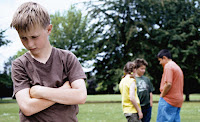Children on the Autism Spectrum: The "Outcast” Subtype

"My son (high functioning autistic) tries to make friends, but seems to not have the social skills to do it. He really wants to relate to his peer group, but is usually shunned by the kids he tries to bond with. How can I help?" The "Outcast” There are 3 basic subtypes in children and teens with Asperger's (AS) and High-Functioning Autism (HFA): The Actor: This child desires inter-personal relationships with others and has learned enough social skills over time to pass as a "neurotypical" (i.e., he or she can "act" like someone who is not on the spectrum). The Loner: This child does NOT desire inter-personal relationships (except with a very safe/close family member or friend) and could care less about "fitting-in" with "the group." The Outcast: This child desires inter-personal relationships with others, but has difficulty finding and maintaining friendships due to a lack of social skills. He or she really wants
